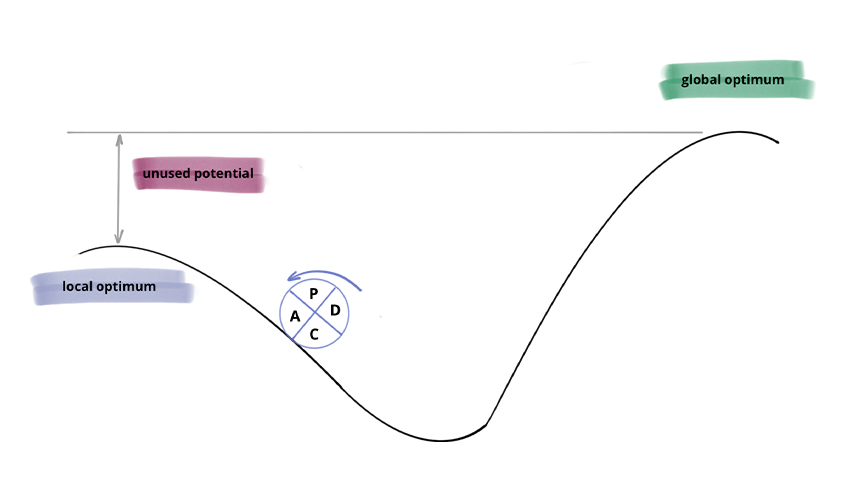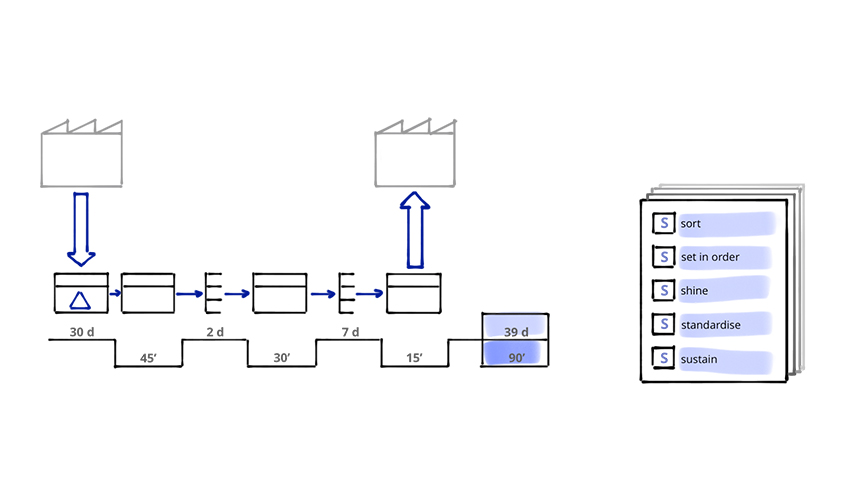
Internal business processes often cost a lot of time and money, as it is the efficiency of industrial processes that determines how much time and money is needed on all levels of a company, from manufacturing to business management. Thus optimising internal business processes has a direct impact on the performance and financial success of companies.
The concept of process optimisation
Process optimisation is nothing new. Ever since James P. Womack’s bestseller “The Machine that Changed the World” from the early nineties, Lean and other approaches to process optimisation have become common management practice. When you submit the keyword “process optimization” at Amazon, you are offered hundreds of books on this very subject.
Considering the vast offer of methods, tools and implementation assistance, today’s industrial processes should be perfect. There should be no waste of resources. It should be natural – and no longer be a competitive advantage – to have optimised processes however complex they be.
However, even almost 30 years after Lean & Co found their way into business, reality still looks different: People responsible for shaping internal processes act according to the motto “We’ve always done it like that”; in spite of changing environment, no adjustments are made to internal processes; things that go wrong are addressed only superficially rather than being used as a starting point for a thorough revamp; and attempts at initialising process optimisation regularly come to nothing. Instead of just patching up bugs with a quick fix, you should focus on sustainable solutions.
5 Steps to Successful Process Optimisation
If you want to make sure that processes within your company run smoothly, without waste of resources and that your next process optimisation leads to a sustainable increase in productivity, you should follow these five steps:
1. Set your objectives accurately
Before starting to optimise internal processes, you should define what exactly it is you would like to improve: Are you concerned about reducing costs, enhancing quality or speeding up response mechanisms? Or are you going after something more complex, like, for instance, customer satisfaction or staff loyalty?
Besides defining the objectives, you should also consider how to measure success. This includes the data to be recorded, the timing of the data recording and any calculation required to evaluate progress.
2. Get to know the status quo
Having defined your objectives and targets, you should familiarise yourself with the current state of affairs within your enterprise. Knowing the status quo will help you identify weaknesses, outline the need for improvement to those involved and carving out starting points for process optimisation.
Furthermore, the analysis of the present state of affairs will help you to check how useful the criteria are which you have chosen for assessing success. At the same time, you build up a coherent frame of reference for your improvements, so that you can measure quantitatively how effective your methods are.
3. Choose a suitable method
The third step is about choosing a method suitable for the set target. Even if various industry pundits suggest something different – there is no one and only path to follow. Therefore, you have to find out yourself which of the available methods is most likely to lead you to success.
In case you should not have the necessary know-how in terms of proper methods and tools, or if you lack orientation in the jungle of approaches and strategies at hand and feel unfit to make a wise and informed choice, you can rely on the assistance of experienced management consultants. In this way you will prevent yourself from missing your targets just because you used inappropriate methods, hence safeguarding your economic success.
4. Get your optimisation project going and done
The next step is simply put: You have to put your project of optimising internal processes into practice. It goes without saying that this should be done comprehensively and with meticulous care, for otherwise the set targets cannot be fulfilled.
During the process of optimisation you should keep an eye on the measurements you have chosen to assess your progress. This will help you see at an early stage if the measures taken have the desired effect or if you might have to modify them.
5. Integrate your improvements into existing structures
Now only one last step is missing, which, however, is often overlooked although it is vital: Processes carried out by humans have a tendency to fall back into old, deeply ingrained habits. To avoid this, you have to make sure the new processes are firmly anchored, i.e. you need to create mechanisms to prevent this regression.
If you keep these five steps in mind when optimising internal business processes, you will truly improve the efficiency and financial success of your company and secure its long-term success.
In this article we present another approach to continuous improvement. If you want to learn which approach best suits your company’s needs, please contact us for a free initial discussion.


